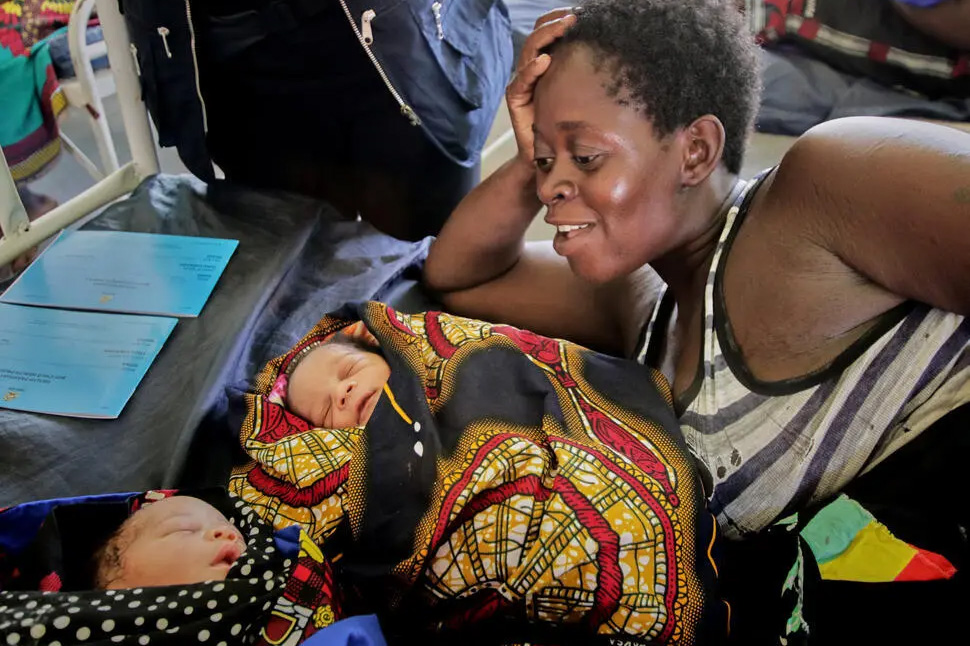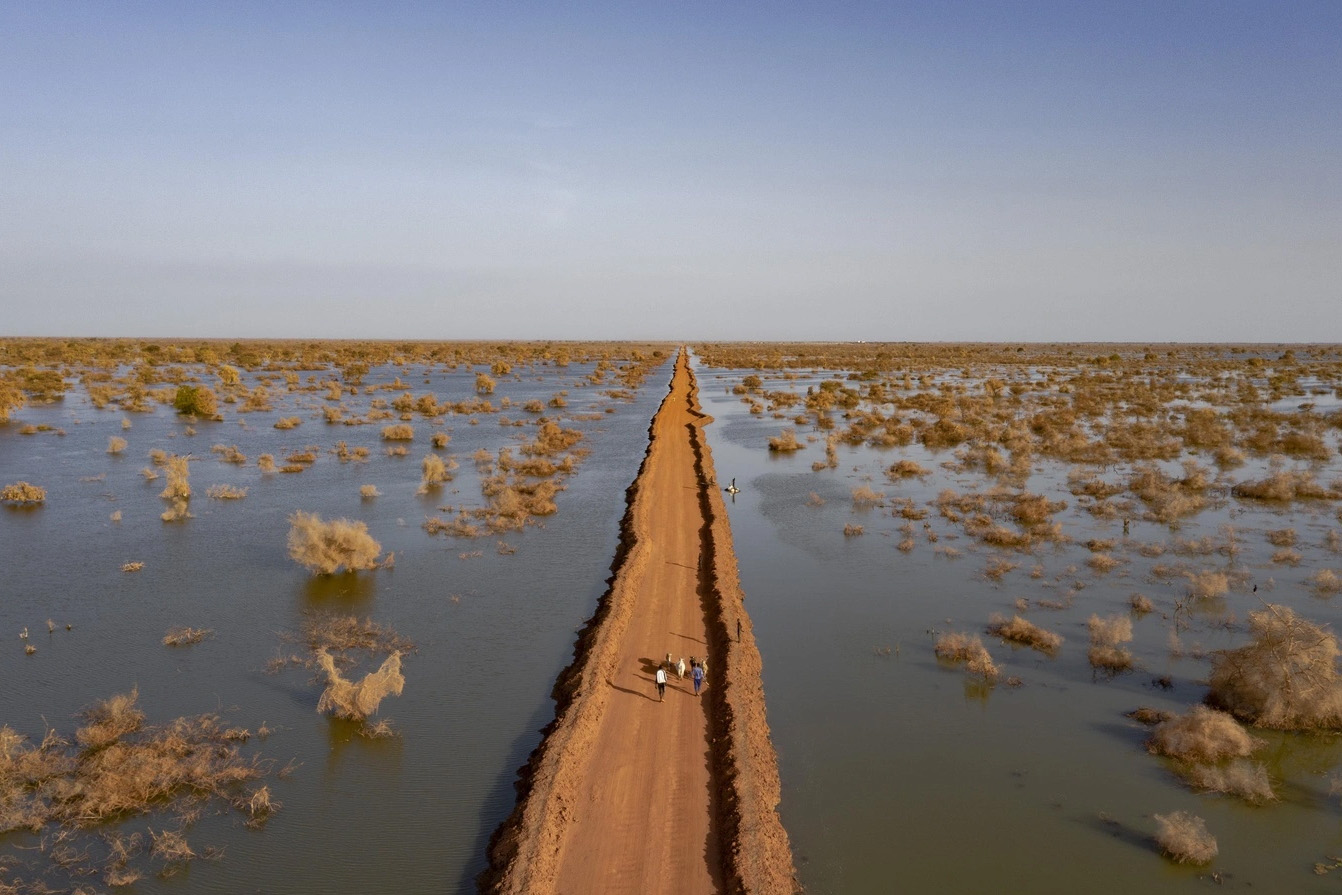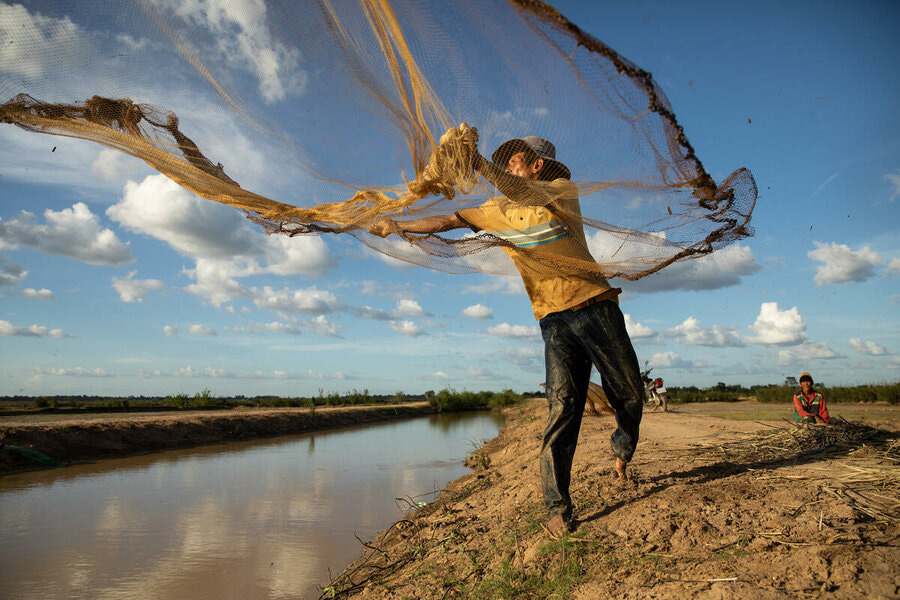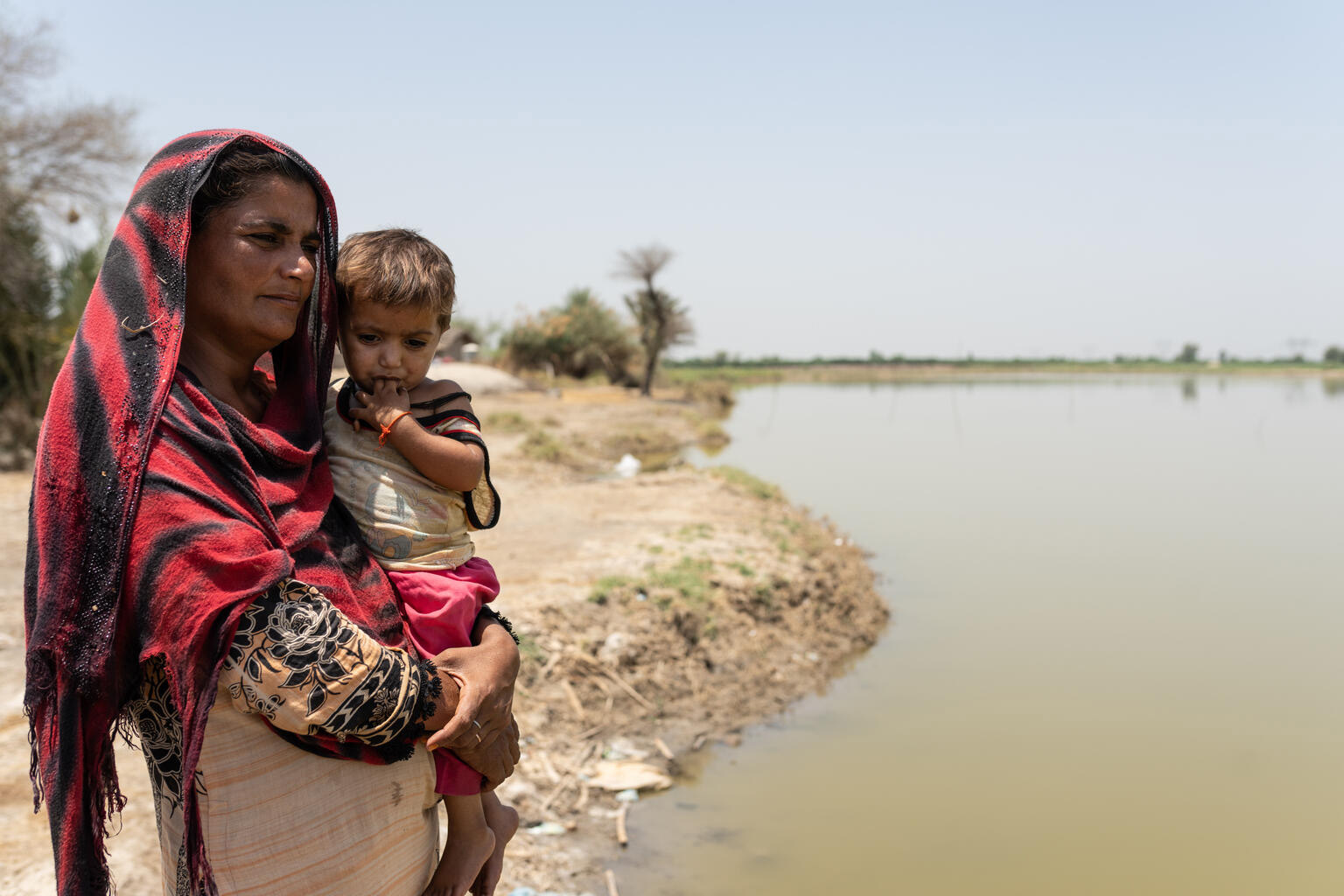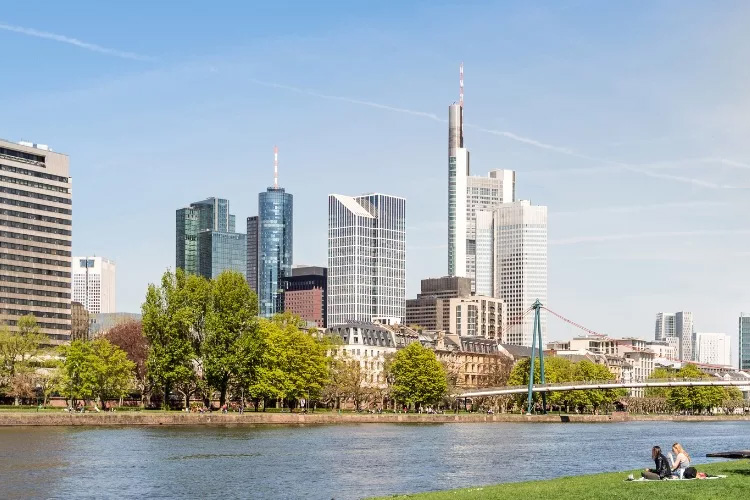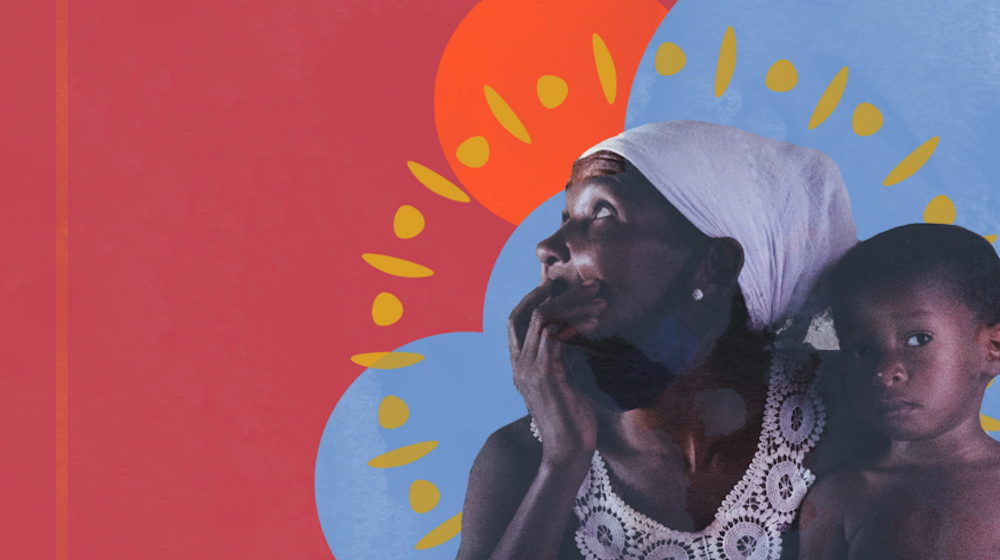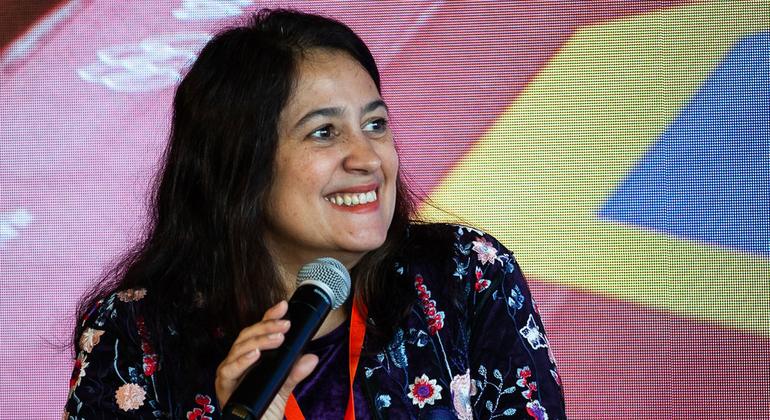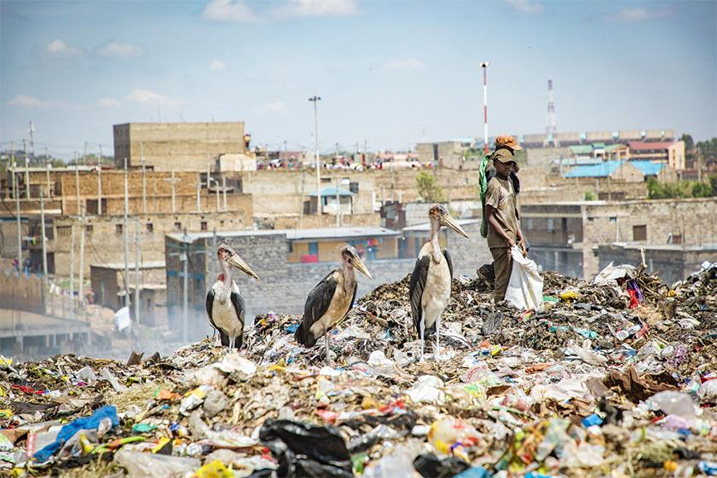When Tropical Cyclone Freddy slammed into Madagascar, Mozambique and Malawi, 32,000 pregnant women were due to give birth within weeks. The destruction of homes, health facilities and travel routes during the cyclone made childbirth much more perilous. Around 5,000 of the women could expect to experience complications in their final months of pregnancy or during childbirth, which, without access to skilled care, could prove fatal. A climate crisis is an obstetric emergency. After a two-hour journey on an ambulance recently repaired by UNFPA, Mercy, 37, gave birth to healthy twin boys.
Climate Change
In Bentiu in South Sudan, climate change is not just an environmental issue, it is a challenge to people’s very existence. Four years of historic rains in this region have submerged farmlands, ancestral homes and road. Some 360,000 people have fled due to the floods. They now live in internal displacement sites below the waterline, hemmed in by dikes. While the mainstream debate surrounding climate change centres on the world becoming uninhabitable in the future, in Bentiu it is already a reality. UNHCR continues to build drainage systems and taller dikes in preparation for the rains.
During the Ocean and Climate Change Dialogue 2023, held during the Bonn Climate Conference, the crucial importance of action to protect the ocean was highlighted, as well as the need for the ocean to feature prominently in all relevant aspects of the UN Climate Change process. The June Ocean Dialogue coincided with preparations for the upcoming UN Climate Change Conference COP28 in the United Arab Emirates at the end of the year, where the outcomes of the global stocktake will be a key focus, along with other ways to increase ambition on climate change.
Fashion has one of the most powerful marketing engines that influences the identities, values, and actions of billions of people. This, in turn, impacts consumption patterns, a central factor in reducing the sector's climate impact. UNEP and UN Climate Change launched the Sustainable Fashion Communication Playbook, a guide with an interactive version, on how to align consumer-facing communication in the fashion industry with sustainable targets in accordance to the Paris Agreement. Its purpose is to reduce the carbon print and overconsumption, demand action, and inspire sustainable lifestyles.
Small-scale farmers in developing countries are only one flood, one drought or one failed harvest away from ruin. IFAD asks "Tomorrow is a new day. What will it look like?"
In the words of rice farmer Deur Sok, the difference the 2.3km canal built in 2022 as part of a World Food Programme-backed project is making in Sambour, a commune in central Cambodia’s Kampong Thom province is tremendous. Changing weather patterns in the past few years have caused an unpredictable succession of drought and flooding, which spelled disaster for farmers relying on so-called wet season – or rainfed – rice cultivation. Farmers in the region had seen their plants wilt when there was not enough water – or washed away when there was too much. The canal has broken their dependence on erratic weather events and as a result, their yields have more than doubled.
Benazir and her husband lost a child amidst the tumult of the floods and have since faced challenges trying to feed their other children. The impact of last year’s historic floods will be felt for years to come by children and their families. In these climate-related crises children suffer most, with those in the poorest communities bearing the biggest burden. More than 1.5 million boys and girls are already severely malnourished, a number that will only rise in the absence of safe water and proper sanitation. UNICEF is training teachers on psychosocial care and health care and has established hundreds of temporary learning centres in the worst-affected districts.
Cities, as engines of prosperity, have been major contributors to climate change. A new report by the World Bank suggests that cities also hold one of the keys to solving the climate crisis. By 2050, nearly 70% of the world’s population will call cities their home. The report examines over 10,000 cities to determine how green, how resilient, and how inclusive they are while examining the two-way relationship between cities and climate change. The report offers guidance to policymakers on how to help their cities become greener, more resilient, and more inclusive.
The likelihood of El Niño developing this year is increasing, according to WMO - creating opposite impacts on weather and climate patterns to La Niña that would fuel higher global temperatures.
Climate change continued its advance in 2022, according to the annual report from the WMO. Droughts, floods and heatwaves affected communities on every continent and cost billions of dollars. Antarctic sea ice fell to its lowest extent on record and the melting of some European glaciers was great. The State of the Global Climate 2022 shows the planetary scale changes on land, in the ocean and in the atmosphere caused by record levels of heat-trapping greenhouse gases. The years 2015-2022 were the eight warmest on record despite the cooling impact of a La Niña event for the past three years.
Shifting to a low-carbon economy can unlock new jobs and opportunities but it must be done in a way that is fair and possible for everyone, according to a new report from UN Climate Change.
In a new advocacy brief, UNFPA explores how climate change disproportionately harms women of African descent and other members of marginalized communities.
Future Olympic events are poised to drive sustainability in sport and fight climate change, led by a set of game-changing measures adopted by the International Olympic Committee (IOC) and supported by the UN. Speaking to UN News ahead of the International Day of Sport for Development and Peace, observed on 6 April, IOC’s Legacy Director, Tania Braga, explains how the 2024 Paris Games will be the first time that new sustainability guidelines will be fully implemented, aligning sport with development and climate action. Eileen Travers asked Ms. Braga how compatible the Olympics are with sustainable development.
Plastic is predominantly produced from oil and gas, both of which are fossil fuels. The more plastic we make, the more fossil fuel is required, the more we intensify the climate crisis. Also, plastic products create greenhouse gas emissions across their whole lifecycle. If no action is taken, greenhouse gas emissions caused by plastic could account for 19% of the Paris Agreement's total allowable emissions in 2040 to limit warming to 1.5 degrees Celsius. Read more about climate change.
People are at the heart of all emissions reduction programs. The World Bank focuses on social inclusion at every stage of result-based climate finance programming — from up-front engagement and investment in communities to enable their participation in emissions reduction activities, to the design and implementation of benefit sharing plans that guide the distribution of results-based payments.

